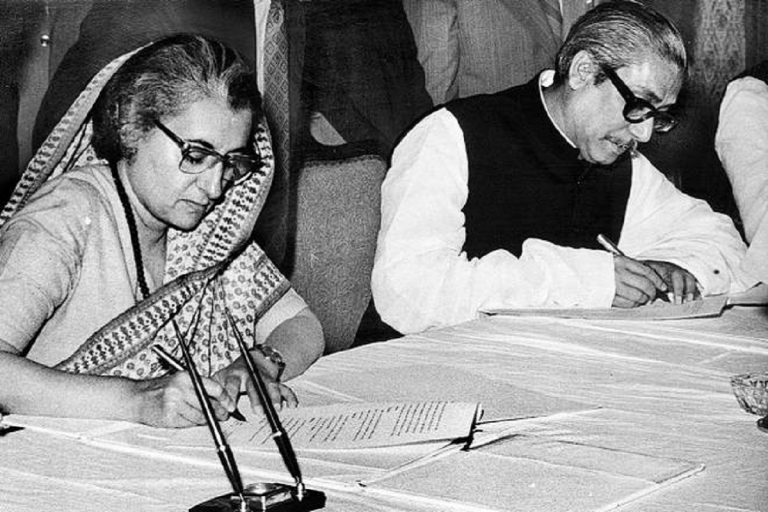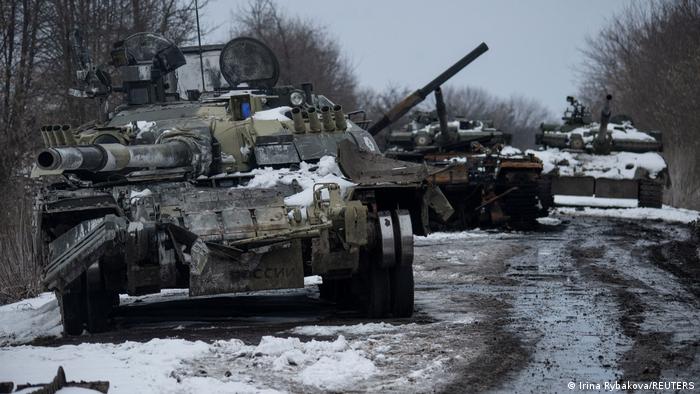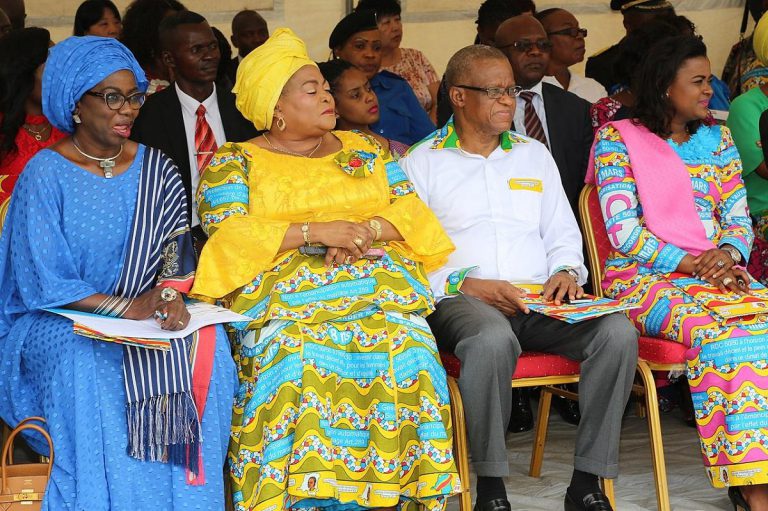What is in a name – Northeast India
Unlike North India or South India, Northeast India is an officially organized and named region. It consisted of three units—State of Assam and Union Territories of Manipur and Tripura—after Independence. The Indira Gandhi Government made conscious efforts to constitute above mentioned three units into the “Northeast region” in the 1970s. However, this was not the first time someone used the “Northeast.” This directional name has its root in colonial times, and it referred to more than one geographical space over a period.
This writeup has three parts. The first describes events which led to the occupation of Assam and neighboring areas by the British, and how “Northeast” was used to refer—first, a frontier, then, name of a new province, and finally, a tract. The second part tells how security concerns forced the Government to initiate new programs, which eventually led to the creation of the Northeast region. And finally, it describes how migration from the Northeast to the metropolitan cities have invested the “Northeast” category with new meanings.
British in the Northeast
In 1764, the East India Company won the Battle of Buxar and signed the Allahabad Treaty the following year. The Mughal emperor Shah Alam II granted the Company Diwani (revenue collecting rights) of Bengal subah—today’s Bengal, Bihar, and Odisha. The Bengal territory was bordering the Ahom kingdom. In the second quarter of the 19th century, internecine conflicts in the Ahom royal family and Burmese intervention in Assam and Manipur opened up a unique opportunity for the Company. Interrupted by the Burmese, Ahom nobles asked the Company for help. Burma’s expansionary tendencies and fear of the internal enemies drawing encouragement from audacious Burmese incursion forced the Company to accept the Ahom invitation, and they decided to help. The Company fought against the Burmese on behalf of the Ahoms and successfully defeated them. The signing of the Yandabo Treaty in 1826 after the first Anglo-Burmese war led to the renunciation of Burma’s claim on the territories of Assam, Manipur, and their neighborhood.
For expansion, commercial gain, and border management, the British decided to explore the region immediately after the Treaty. An officer, R.B. Pemberton, wrote a Report on the Eastern Frontier of British India on the Frontier’s tribes in 1835. Later in 1866, Alexander Mackenzie took charge of political correspondence in the Bengal Presidency. He wrote a comprehensive account of History of the Relations of the Government with the Hill Tribes of the North-East Frontier of Bengal. It was probably the first time when someone used the word “North-East.” The frontier included the Himalayan Kingdoms and tribes in the north, east, and south of the Assam Valley and the western slopes of Himalaya, lying between Bengal and independent Burma. These territories, though technically independent, were a cordon sanitaire around the British India and expected to serve as buffer zones.
Assam became a chief commissionership in 1874, and many Naga and Lushai (Mizo) territories were annexed into it over time. Subsequently, the British decided to combine Assam and Eastern Bengal into a single province after the Partition of Bengal in 1905. They almost removed Assam from the name of the new province. The name initially proposed was North-Eastern Province. However, the British dropped the idea of calling it North-Eastern Province in favor of the name Eastern Bengal and Assam. Pressure from European tea planters, who had developed a stake in Assam’s name, changed their mind. The new province did not survive for long, and Assam returned to its former status and old boundaries in 1912. Later, Assam was upgraded into a governor’s province in 1921, according to the Government of India Act, 1919.
There were still unadministered areas between Assam and international borders. The British wished to bring them under administration but were unwilling to interfere with the people’s life and customs. However, it didn’t continue for long. By a notification, the Foreign and Political Department extended the Assam Frontier Tract Regulation of 1880 to the hills inhabited by Abors, Mishmis, and others. Thus, those areas came under some sort of administration in 1914 and were named the North-East Frontier Tract (NEFT). The NEFT was located between the settled districts of Assam and the international border with Tibet and Burma. In 1951, the plain portions of the Tracts were transferred to Assam’s administrative jurisdiction. After that, the remaining areas of NEFT, along with the Naga Tribal Area, were reconstituted as the North-East Frontier Agency (NEFA) in 1954.
Northeast in the Post-Colonial Times
With Independence came the tragic Partition. Unlike Punjab and Bengal, only Bengali-speaking Sylhet district of Assam went to East Pakistan (now Bangladesh). But the Partition affected the region most in the following years. What started as the McMahon Line in 1914 with Tibet and drawing of the Indo-Burma border in 1937, ended with virtually land-locking the whole region in 1947. This change of frontiers into borders parted the local tribes into more that one sovereign nation, restricted their movement beyond national boundaries, and severely affected their economic and cultural relations.
The 1960s were hard years for the country. India fought two wars, one with China in 1962 and another with Pakistan in 1965. While the Naga movement was already active, a new Mizo rebellion began in 1966. Additionally, the neighboring countries—China and East Pakistan—were helping them with arms and training. Furthermore, 98% of the region’s borders are international, and it’s connected through only a 22-KM-wide Siliguri-corridor. Sanjib Baruah says that all this made the Indian state anxious about the prospect of the external and internal enemies coming together and contributing a looming threat to national security. The sense of insecurity in the region forced the Government to introduce new policies and start new programs. The Indian Parliament passed two Acts—Northeastern Areas (Re-organization) Act and North Eastern Council Act—in the last week of 1971, just a few days after India fought and won another war against Pakistan on its eastern borders.
The first Act was to install a new structure of governance in the region by creating new states. The aim was to develop local stakeholders in the political process of the region. Furthermore, it also sought to expand the state apparatus into the hinterlands where a sense of belonging to the Indian state-nation was weak. Arunachal Pradesh, Manipur, Meghalaya, Mizoram, and Tripura came into existence either as a full State or as a Union Territories. The state of Nagaland was already created in 1963.
The second Act created the North Eastern Council to plan and supervise the security and development matters. The Council includes State Chief Ministers, Governors, and officials from union ministries. Presence of the Governors—often from the armed forces and other security agencies— and officials from union ministries in the Council gives the Central Government an upper hand in the development and economic planning. Security concerns often played a crucial role in Central Government decisions. Moreover, the states from the region are heavily dependent on the Central Government for most of their budgets, leaving them little room to decide on how they will spend the money and utilize the resources.
Once the Northeast became an official category, it was used liberally by policymakers, security analysts, media, academicians, and various institutions and organizations. There are a ministry, university, and different research centers named after it: Union Ministry of Development of NE Region, North Eastern Hill University (NEHU), The Centre for North East Studies and Policy Research at Jamia Millia Islamia, and Special Centre for the Study of North East India at Jawaharlal Nehru University. We also have a various academic, student, church and other organizations with Northeast in their names: North-East India Political Science Association (NEIPSA), North East India History Association (NEIHA); North East Student Organization (NESO), Council of Baptist Churches in North East India (CBCNEI), North East India Christian Churches (NEICC), and Northeast United Football Club.
Migration from the Northeast to the Metropolitan Cities
People from the NE region have been coming to the “mainland” for various reasons like central Government jobs, civil services training, or higher education. But initially, it was limited to the well-off families. This trend changed after the 1990s when people from different backgrounds started migrating for various purposes. Reasons like the new generation and their changed perspective towards the mainland, changing social aspirations, limited livelihood prospects, and sporadic armed conflicts push people out of the region. Besides, the region was not well connected to the metro cities, and traveling was stressful and costly.
Better connectivity and many familiar people from the same village and community have also encouraged youths from working-class and lower-middle-class backgrounds to migrate. Additionally, as the NE migrants began to create a niche in specific sectors, and labor recruiters traveled to the region to offer jobs in call centers, hotels, and other service sector jobs. Employers in these sectors desire migrant labor from the NE, mainly targeting their distinct appearance and English language skills. However, outside the enclosed spaces of malls and call-centers, they face many challenges in their everyday lives like racism, discrimination, and harassment.
In the first half of the 2010s, some significant developments took place. The murder of NE migrant Loitam Richard and an “exodus” of NE migrants from Bengaluru and Pune after a rumor that local mobs will attack them in August 2012 provoked a rare conversation about racism at the national level. Two years later, protest against the murder of a 19-year-old student from the region Nido Tania in the national capital in January 2014 forced the central Government to constitute a 12-members committee to look into the concerns of the Northeast people living in other parts of the country, headed by M.P. Bezbaruah. The committee submitted its report in July 2014 and recommended many immediate, short, and long term steps to end racial discrimination. Therefore, people from the region also use ‘Northeast’ to distinguish themselves from the “mainland” on various occasions. It brings people from different NE states and communities under one umbrella identity to protest against racial discrimination, and show solidarity with each other in hours of need. However, Northeast is not a homogenous category for identification. One should always be mindful of the internal diversity of the Northeast.
All these additions in the career of this directional name—Northeast India— have expanded its scope and invested it with different content, and meanings. What was first used to refer to a frontier, and later, to officially organize an administrative region is now also used to identify people and their cultures. A debate among the scholars from the region is going on whether the Northeast—and its derivative Northeasterner—can represent them with all diversity.
Further readings
- Baruah, Sanjib. (2005). Durable Disorder: Understanding the Politics of Northeast India. Delhi, Oxford University Press.
- Bezbaruah Committee Report (2014). Government of India.
- Bhaumik, Subir. (2009). Troubled Periphery: The Crisis of India’s North East. SAGE Publications India.
- Chaube, Shibani Kinkar. (1973). Hill Politics in Northeast India. Orient Blackswan.
- McDuie-Ra, Duncan. (2017). Northeast Migrants in Delhi: Race, Refuge, and Retail. Amsterdam University Press.
- Pachuau, Joy. (2014). Framing the margins in Being Mizo: Identity and Belonging in Northeast India. Oxford University Press.
Acknowledgment: I want to thank my friends CK, Punya and Aman for their feedback.
Featured Image Credits: Wikipedia






